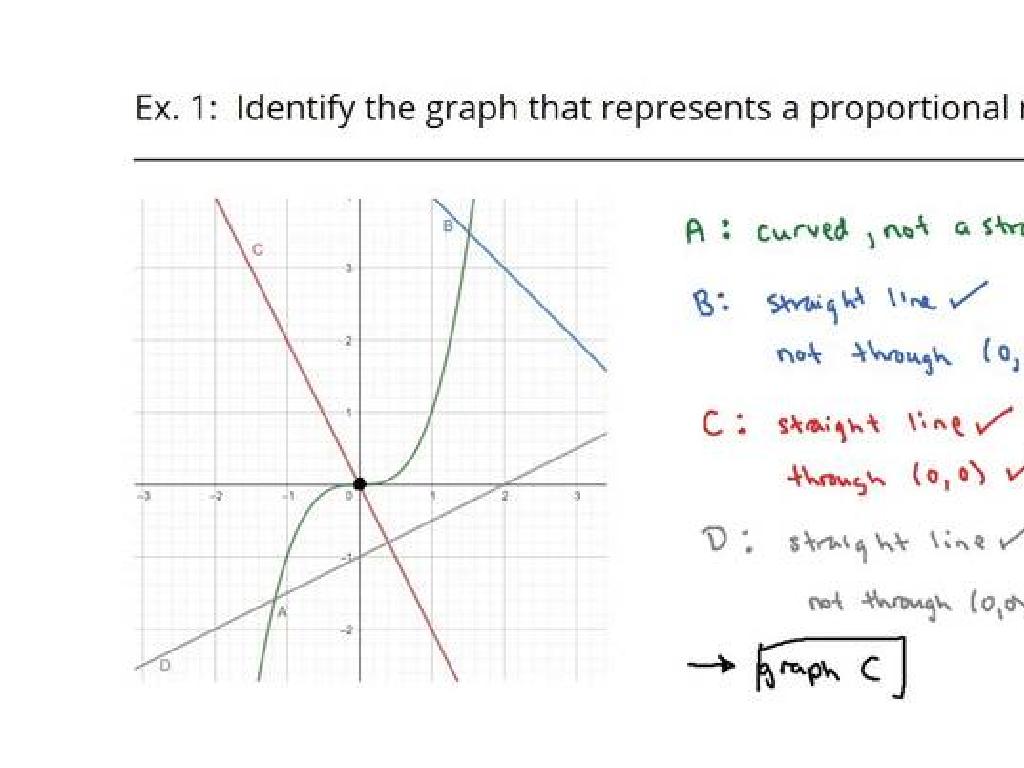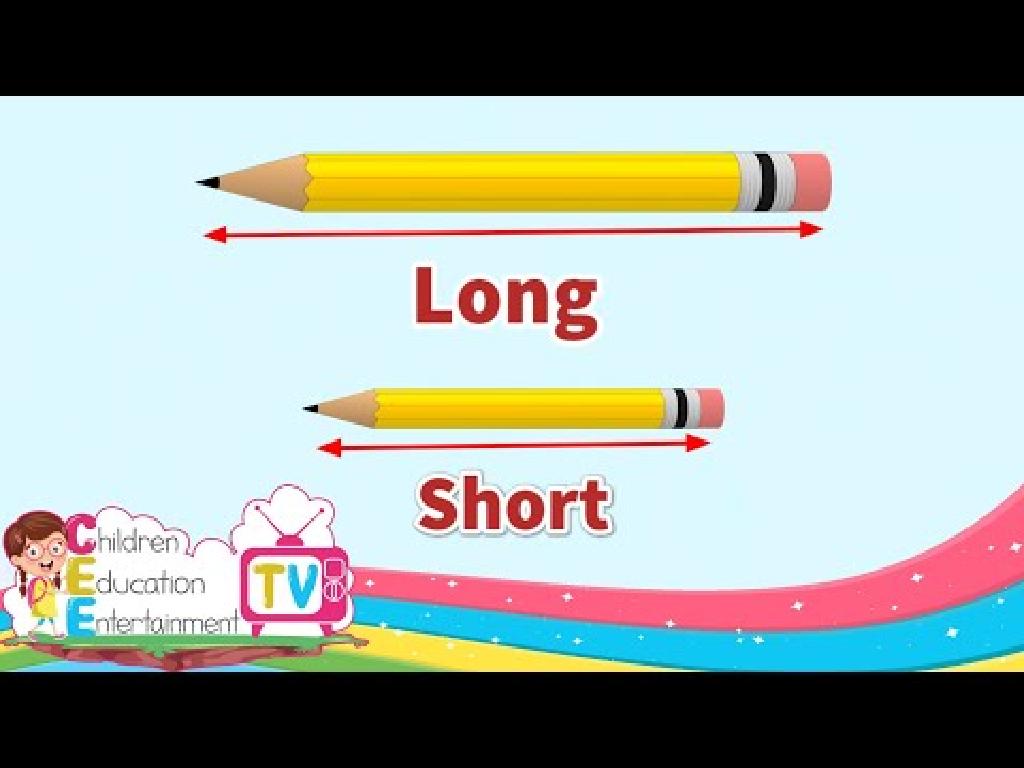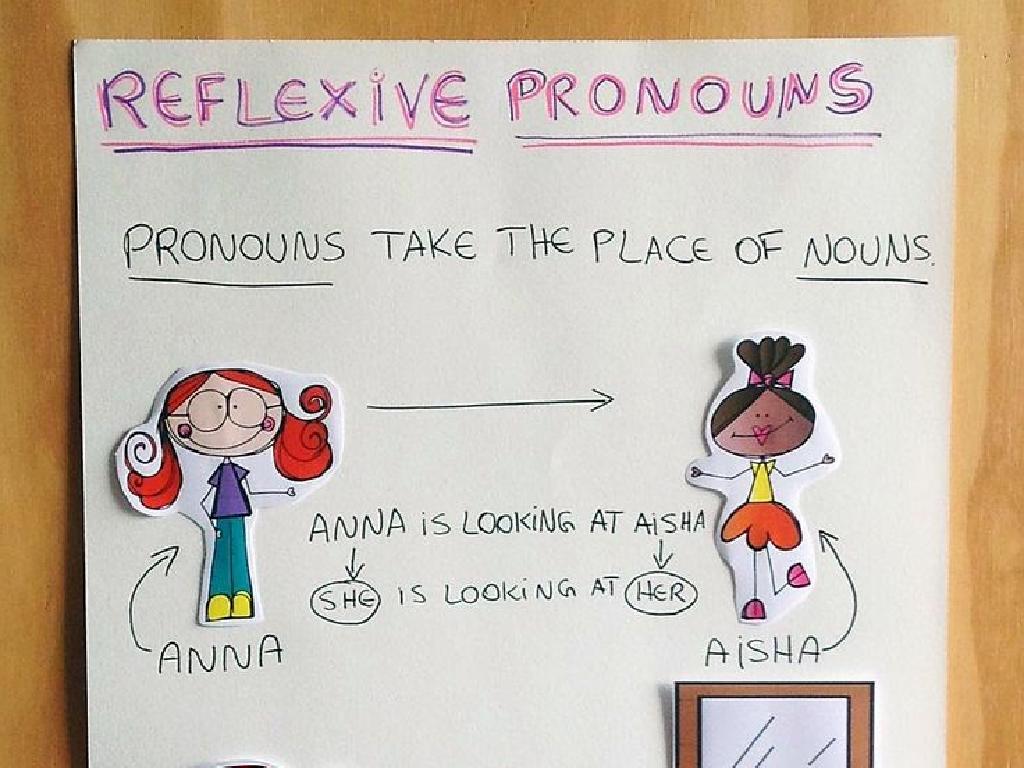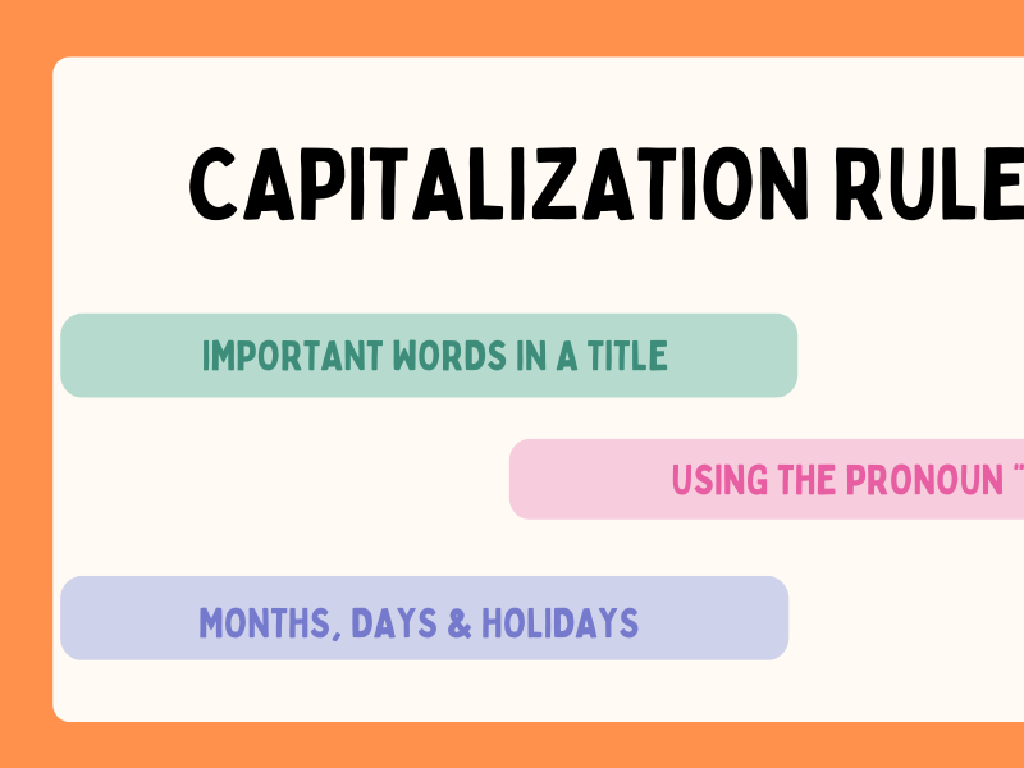Use Lines Of Latitude And Longitude
Subject: Social studies
Grade: Fifth grade
Topic: Maps
Please LOG IN to download the presentation. Access is available to registered users only.
View More Content
Welcome to the World of Maps!
– Maps: A tool for world exploration
– Importance of maps in daily life
– Help us find places and plan routes
– Introduction to latitude and longitude
– Grid system that helps locate any place on Earth
– Navigating our world with coordinates
– Latitude lines are horizontal, longitude lines are vertical
|
This slide introduces students to the concept of maps and their significance in understanding our world. Begin by explaining that maps are tools that allow us to explore places we’ve never been. Emphasize how maps are used in everyday life, such as finding a location or planning a trip. Introduce latitude and longitude as the grid system that can pinpoint any location on Earth, with latitude lines running horizontally and longitude lines running vertically. This will set the stage for a deeper dive into how to use these lines to find specific places on a map. Encourage students to think of maps as a way to travel the world from their classroom.
Understanding Latitude
– Latitude lines run east-west
– Horizontal lines across Earth
– ‘Ladder’ to climb the globe
– Think of them like steps on a ladder
– Measured in degrees
– From 0° at Equator to 90° at poles
– Equator as the starting point
|
Latitude lines are the imaginary horizontal lines that run from the east to the west on the globe. They are often compared to the rungs of a ladder, which helps students visualize how they can be ‘climbed’ from the Equator up to the poles. Each line of latitude is measured in degrees, with the Equator at 0 degrees latitude and the North and South Poles at 90 degrees. This concept is fundamental for understanding how we can locate places on Earth using a coordinate system. Encourage students to think of the Earth as split into 180 equal parts from the Equator to the poles, and discuss how latitude affects climate.
Understanding Longitude
– Longitude lines: north to south
– Like the slices of an orange, they connect the top and bottom of the Earth.
– Converge at poles, wide at equator
– They are farthest apart at the equator and meet at the North and South Poles.
– Measured in degrees
– We use degrees to know how far east or west a place is.
– Prime Meridian as reference
– The Prime Meridian is the starting point for measuring longitude.
|
This slide introduces the concept of longitude to students. Longitude lines are imaginary lines that run from the North Pole to the South Pole. These lines are used to determine the east or west position of a point on Earth. They are measured in degrees, with the Prime Meridian being the 0-degree longitude line. It’s important for students to understand that the Prime Meridian divides the Earth into the Eastern and Western Hemispheres, just as the equator divides it into the Northern and Southern Hemispheres. Use a globe or a map to visually demonstrate how these lines spread out from the poles and converge at the equator. Encourage students to think about how longitude is used in everyday life, such as in GPS technology.
The Grid System: Navigating the World
– Latitude and Longitude explained
– Latitude lines are horizontal; Longitude lines are vertical.
– Creating a grid on maps
– Maps have grids made from latitude and longitude lines.
– Finding places using coordinates
– Use the crossing points of lines to pinpoint locations.
– Why grids are key for navigation
– Grids help us navigate across land and sea accurately.
|
This slide introduces the grid system used in maps, consisting of latitude and longitude lines. Latitude lines run horizontally around the globe and are used to measure distances north or south of the Equator. Longitude lines run vertically from the North Pole to the South Pole and measure distances east or west of the Prime Meridian. By understanding how these two sets of lines work together, students can learn to create a grid system on a map, which allows them to find specific locations using coordinates. Emphasize the importance of this system in navigation, historically for sailors and explorers, and in modern times for technology like GPS. Encourage students to think of how they use navigation in their daily lives, such as in cars or on smartphones.
Navigating with Latitude and Longitude
– Understanding coordinates
– Coordinates are like a map’s address, using latitude and longitude lines.
– Degrees, minutes, and seconds
– Each degree is divided into 60 minutes, and each minute into 60 seconds.
– Practice with real examples
– We’ll use coordinates to find different locations together.
– Locate places on a map
|
This slide introduces students to the concept of latitude and longitude as a means to pinpoint locations on Earth. Start by explaining coordinates as a system to find any place on a map, similar to how a street address helps us find a house. Emphasize that degrees, minutes, and seconds are units of measurement that make coordinates more precise. Use real-world examples to practice, such as finding the coordinates of the school, a famous landmark, or a city they’d like to visit. This will help students understand how latitude and longitude work in a practical context. Encourage students to ask questions and participate in the activity for better retention.
Activity: Locate the Treasure!
– Find the treasure using map skills
– Work in pairs for coordinate hunt
– Use latitude and longitude to locate
– Share your treasure’s location
– Discuss how you found it with classmates
– Reflect on the activity
– Talk about what you learned
|
This class activity is designed to apply students’ knowledge of latitude and longitude in a fun and engaging way. Have the students work in pairs to encourage collaboration. Provide each pair with a map that has several ‘treasures’ marked by coordinates. Students will use their understanding of latitude and longitude to find the treasures. After the activity, each pair will share the coordinates of their treasure and how they found it with the class, allowing for discussion and reinforcement of the concepts. Possible variations of the activity could include using different maps, having a timed challenge, or creating a story about their treasure’s origin. This hands-on experience will help solidify the students’ skills in using lines of latitude and longitude for location purposes.
Mapping Our World: Latitude and Longitude Recap
– Recap: Latitude and Longitude
– We learned these are invisible lines that help us find places on Earth.
– Value of Geographic Coordinates
– Knowing this helps us navigate and understand the world better.
– Preview: Exploring Map Types
– Next, we’ll discover different maps and their uses.
– Engage: Share Your Thoughts
– Think about how you used latitude and longitude today.
|
This slide aims to consolidate the students’ understanding of latitude and longitude, emphasizing their importance in navigation and geographic literacy. It’s crucial to review the concepts to ensure retention. Highlight how these coordinates are used in daily life, such as in GPS technology. Give a brief introduction to the next lesson on types of maps to pique interest. Encourage students to reflect on how they have applied their knowledge of latitude and longitude in class activities or in understanding locations around the world.






